Protocols in Process
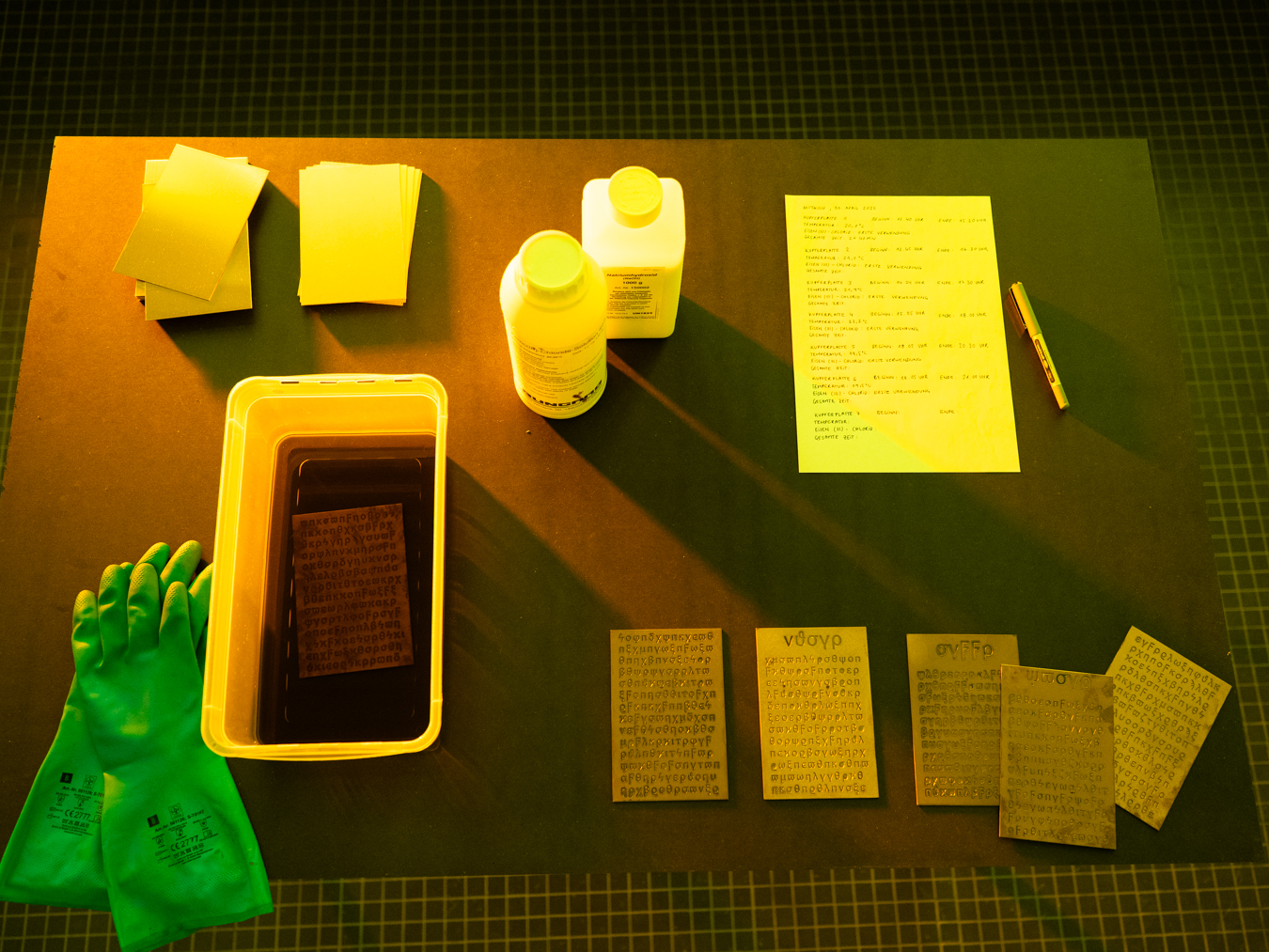
First prototypes in reflection.
Dialogue between art, business and technology.
(c) Videography and editing by Florian Schurz.
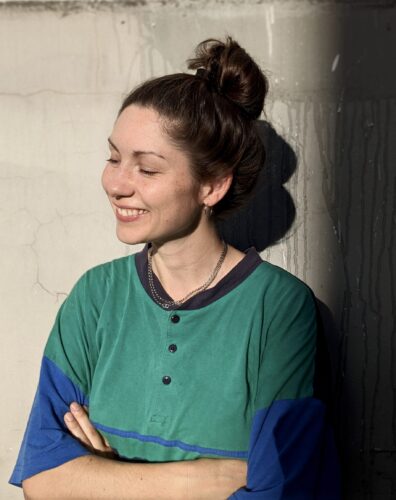
(c) Hannah Frauenrath
Participants
Laura Immler lives in Leipzig and develops spatial and stage concepts, sound works and content settings for performances in the independent scene, at municipal and state theatres and in art spaces. Her works incorporate built, public and digital spaces and scrutinise social orders and future scenarios in a (post-)capitalist context.
Olivia Rosendorfer (all pronouns) works as a set designer, costume designer and performer. Her work centres on the development of site-specific, immersive stage spaces in which architecture and sound interact to create atmospheres that engage the audience.
X
Programming: Klaus Schapp, Vector Informatik GmbH
X
Interviews with / visits to:
- Fraunhofer IWU / Machine Tools and Forming Technology / Dr Julia Schönherr
- Fraunhofer ENAS / Electronic nanosystems / Andrea Messig
- 3D-Micromac AG / Laser micromachining / Claudia Radelow
- Vector Informatik GmbH / Maren Fromme
- EDC Electronic Design Chemnitz / Circuits for microchips / Dr Detlef Billep
- TU Research Centre MAIN / Materials, architectures and integration of nanomembranes / Dr Thomas Blaudeck
The result of artistic technological collaboration – Protocols in Process
Laura Immler’s work Protocols in Process is a laboratory space, time capsule and experimental set-up all in one. Visitors encounter etched copper plates, encrypted company secrets and talking sensors. Distributed sound prototypes measure environmental parameters and translate them into speech. If certain values get out of control – if it gets too hot or too loud – the sensors warn the visitors.
As part of the FUNKEN Kolleg, Immler visited six companies and research institutes on the Chemnitz Technology Campus. It makes processes visible that otherwise only take place in secret: People and materials can be both objects of risk and protection.
A central element of the installation is a paused encryption process. Confidential interview fragments were etched into copper plates using photolithography – a technique used in circuit board production. The method is based on the Rosetta Stone – a historical data carrier that makes it possible to decipher Egyptian hieroglyphics. The combination of modern encryption with an ancient reference system materialises the desire to preserve knowledge over long periods of time.
Material
various stainless steel rods; hot-dip galvanised tubular connectors; anchor plates made of MDF, iron(III)chloride solution 40%; acid-resistant etching tray; various copper plates with Greek writing symbols created by photolithography 10x15cm/1mm; XOR key binary on copper plate; corroded graphene on copper plates and copper circuit boards; illuminants; mobile sound prototypes with various sensors, raspis, power bank and loudspeakers
Photographs: (c) Michele Scognamillo
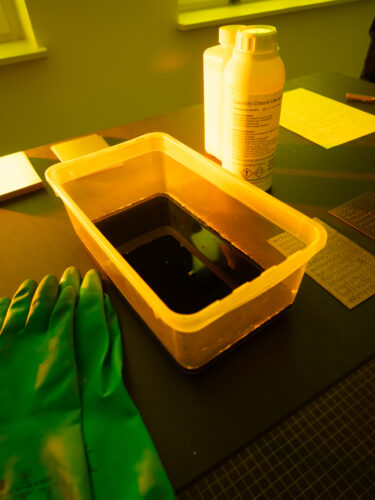

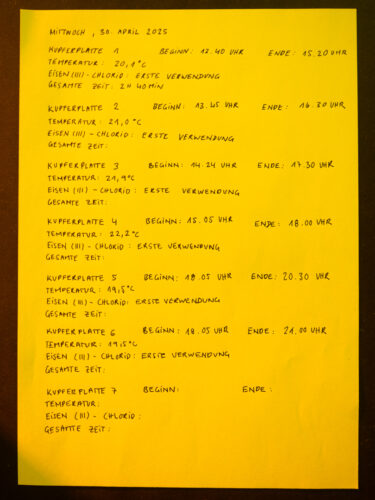

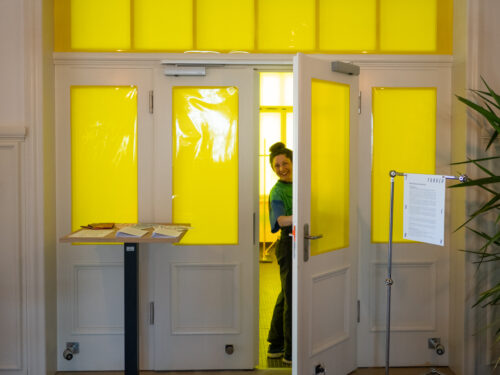
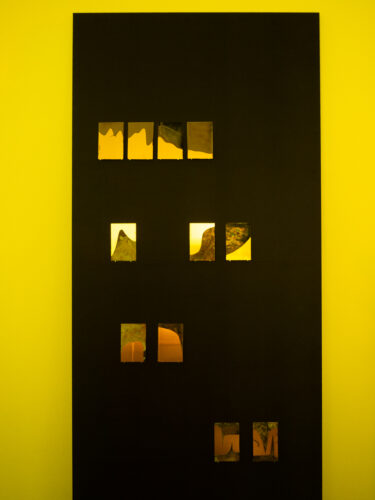
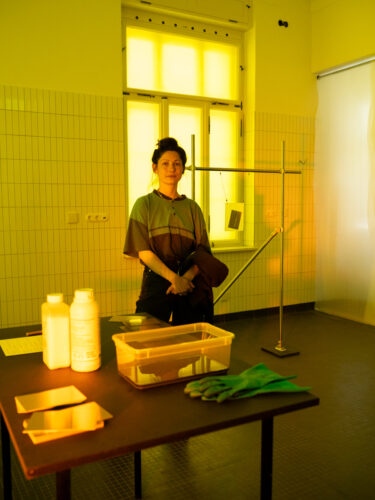

Backgrounds:
The FUNKEN Space on the technology campus is to develop into a place where art and technology can interact with each other. In order to artistically explore the campus as a living and working space, Laura Immler conducted interviews with employees of various resident organisations and gained insights into their everyday working lives.
With a “look through the keyhole”, she uses aesthetic means to open up new perspectives on the inner workings of research laboratories and working environments to visitors. Her work invites visitors to perceive previously hidden spaces or to see familiar environments and technologies with different eyes in the context of different materialities and narratives.










